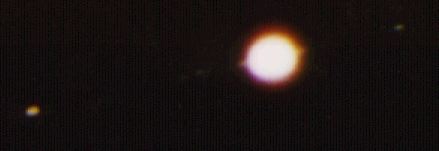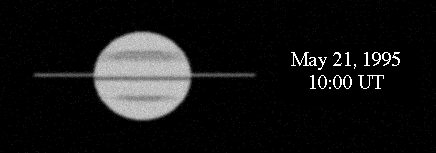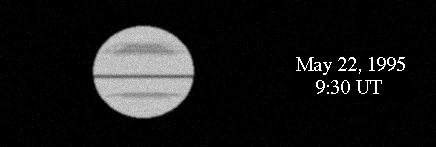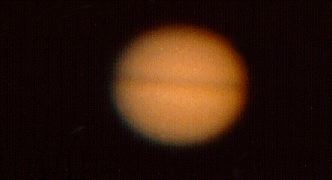Texas A&M Images of Saturn


Chris Dahl
crd8212@zeus.tamu.edu

On May 21, 1995 at 10 UT, I had the opportunity to observe Saturn. This was
about 19 hours before the predicted time of Earth's passage through the ring
plane of Saturn. The rings were visible with a 14" Schmidt-Cassegrain (f/11)
telescope and appeared as a thin dim line. The shadow of the rings and the north
and south equatorial bands were visible on the planet.
Titan, Rhea, Tethys and Dione were also visible.

On May 22, 1995 at 9:30 UT (about 4 hours after the ring plane crossing) I could
see no trace of the rings of Saturn except for the its shadow which was south of
Saturn's equator as it was the night before. Titan, Tethys and Dione were also
visible. I found out later that Rhea was in front of the planet. On both
mornings, Saturn was a great deal dimmer to the naked eye than it had appeared a
months earlier. I had not expected such a drastic difference in brightness. The
observations were made just west of College Station, Texas at the Texas A&M
Observatory.
Dan Bruton
astro@tamu.edu

 Return to Saturn Events
Return to Saturn Events